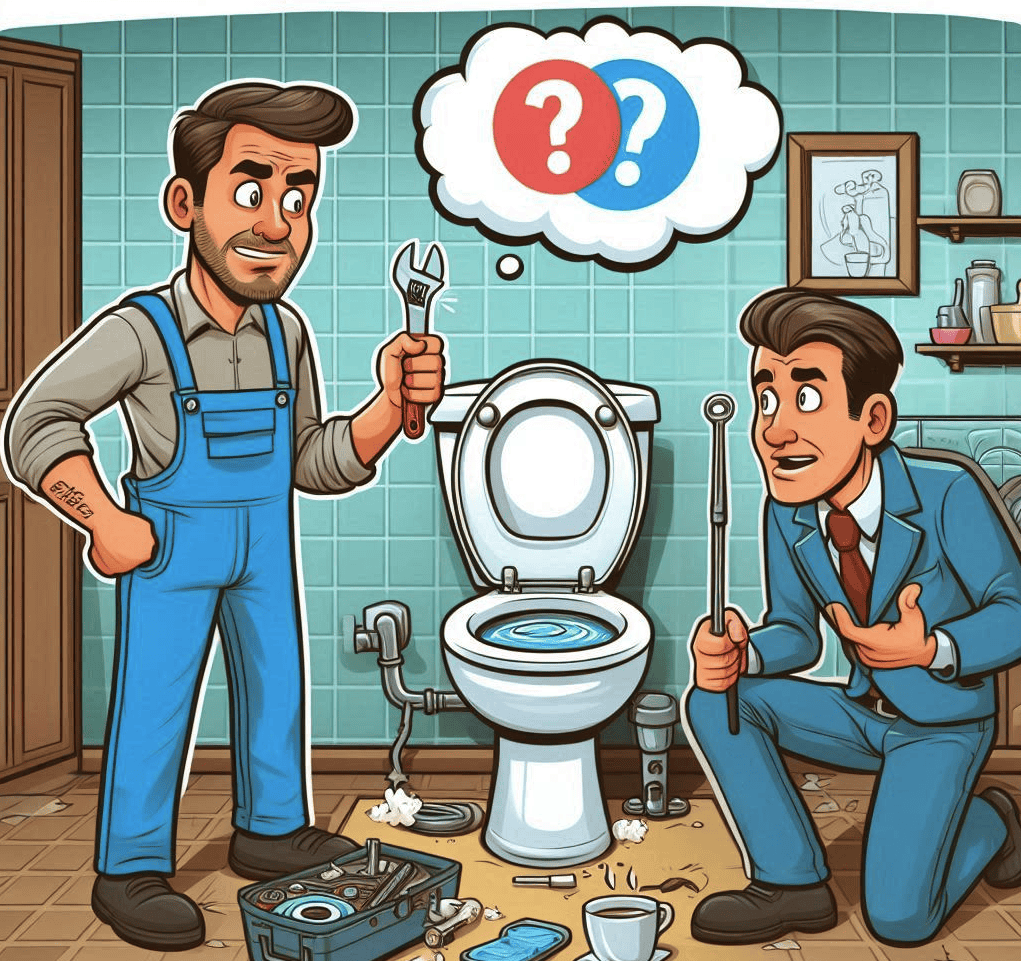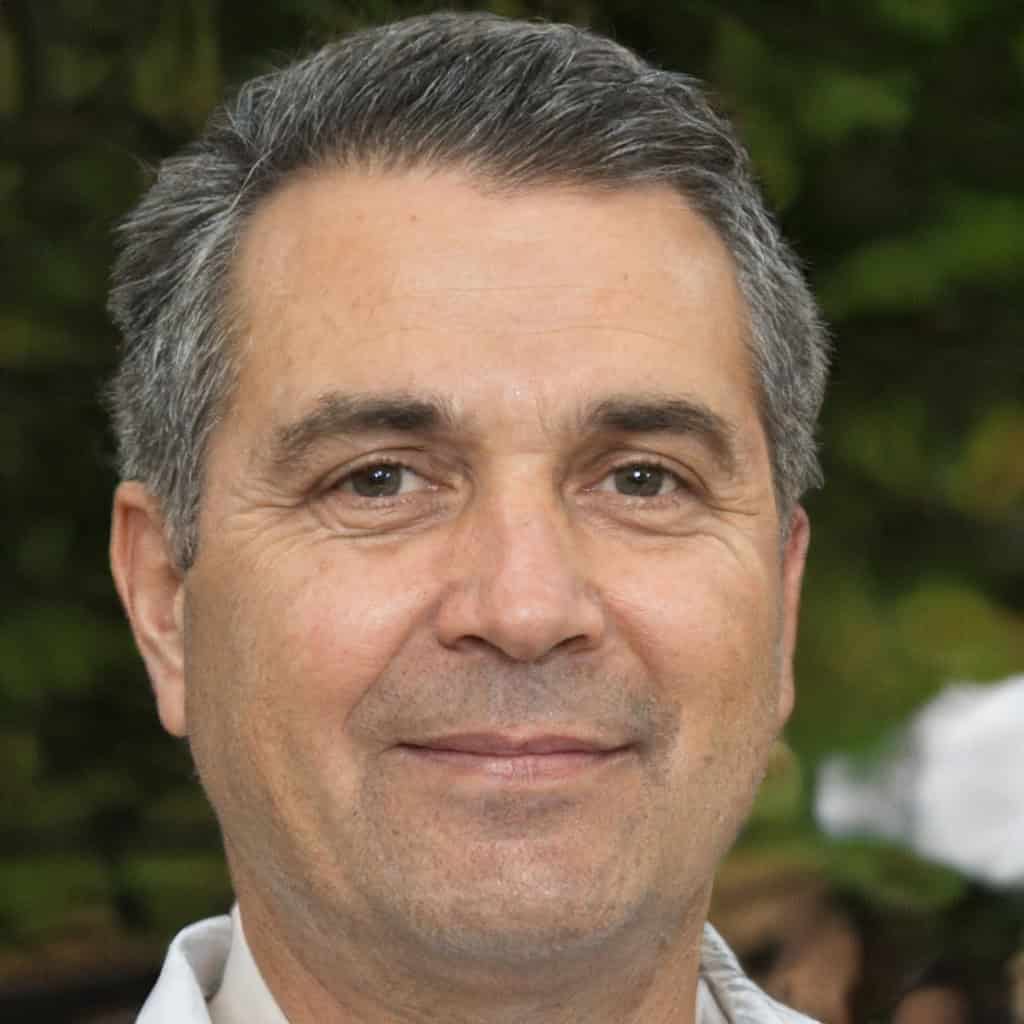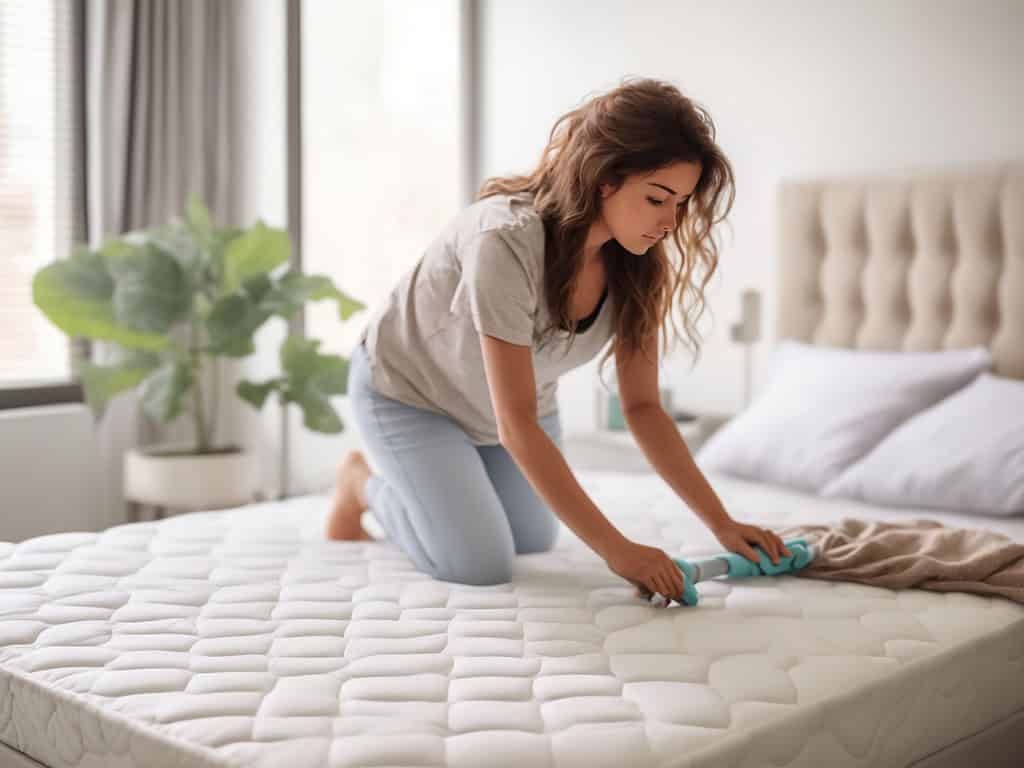Ever had that sinking feeling when you push down the lever, only to watch the water swirl but refuse to go down? Yep, a non-flushing toilet is one of the most frustrating plumbing problems a homeowner can face. In fact, a recent survey found that 78% of people have experienced a toilet that won’t flush at least once.
The good news is, in most cases, you can get that stubborn toilet working again with a little troubleshooting and some basic DIY skills. As someone who’s helped countless homeowners tackle this issue, I’m here to walk you through the common culprits and guide you step-by-step on how to get your throne flushing properly once more.
Common Reasons for a Non-Flushing Toilet
When your trusty porcelain throne refuses to do its job, there are a few usual suspects to consider before reaching for the phone to call in the plumbing cavalry.
Clogged Toilet
A clogged toilet is a common issue that can cause frustration and inconvenience. One of the primary reasons for a clog is the excessive use of toilet paper. While toilet paper is designed to disintegrate in water, using an excessive amount in one go can overwhelm the system and lead to blockages in the pipes.
Additionally, flushing non-flushable items down the toilet, such as wipes or hygiene products, can also contribute to clogs.
These items do not break down easily and can accumulate in the pipes, obstructing the flow of water and waste. Furthermore, over time, waste can build up in the pipes, reducing the diameter available for water flow and causing frequent clogs.
Low Water Level in Tank
A low water level in the toilet tank can significantly impact its flushing performance. If the tank does not fill up adequately after each flush, it can result in weak or incomplete flushes. One common reason for inadequate fill-up is a malfunctioning fill valve.
The fill valve regulates the water flow into the tank, and if it is faulty, it may fail to allow a sufficient amount of water to enter the tank. This can lead to ineffective flushing and the need for multiple flush attempts to clear the bowl properly.
Flapper Issues
Flapper issues are another prevalent cause of a non-flushing toilet. The flapper is a crucial component that controls the release of water from the tank into the bowl during a flush. If the flapper is warped, it may not seal correctly, allowing water to leak continuously or preventing a proper flush.
Similarly, a worn-out flapper can lead to similar issues, as it may no longer create a tight seal. Improper sealing of the flapper can result in incomplete flushing, where water continues to run into the bowl after the flush cycle is complete.
Addressing flapper issues promptly is essential to restore the toilet’s flushing functionality.
Clogged Jet Holes
In addition to clogs and flapper malfunctions, another culprit that can hamper your toilet’s flushing abilities is clogged jet holes.
These tiny openings around the rim of the toilet bowl and sometimes under the rim are crucial for creating the powerful flush action that clears waste effectively.
If they’re blocked by mineral deposits or debris, the water flow is disrupted, leading to inefficient flushing. It’s like trying to water your garden with a kinked hose – the water just can’t reach where it needs to go.
Vent Pipe Problems
Issues with the vent pipe can also contribute to a toilet that won’t flush properly. The vent pipe is responsible for allowing air to flow into the plumbing system, which helps create the suction needed for effective flushing.
If the vent pipe becomes blocked or obstructed, it can disrupt the air flow and prevent the toilet from flushing correctly. This could be due to a buildup of debris, a bird’s nest, or even a problem with the roof vent.
Addressing vent pipe problems often requires the expertise of a professional plumber.
Mineral Buildup
Over time, mineral deposits can accumulate in the toilet’s internal components, causing issues with the flushing mechanism. This mineral buildup can occur on the flapper, the flush valve, or even the jet holes around the rim of the bowl.
As these surfaces become rougher and less smooth, the water flow is disrupted, leading to poor flushing performance. Addressing mineral buildup often requires the use of specialized toilet bowl cleaners or even professional cleaning services.

Troubleshooting and Solutions
When your toilet refuses to flush, it can be a real head-scratcher. But don’t worry, there are some tried-and-true troubleshooting steps you can take to get that porcelain throne back in working order.
Clearing Clogs
One of the most common culprits behind a non-flushing toilet is a good old-fashioned clog. Whether it’s an excessive amount of toilet paper, a wayward toy, or just a nasty buildup of waste, these blockages can completely shut down your flushing capabilities. But fear not, there are a couple of handy tools you can use to tackle this problem head-on.
First up, the trusty plunger. This simple yet effective device can work wonders in clearing minor clogs. By creating a seal over the toilet’s opening and then rapidly pulling up and pushing down, you can often dislodge the blockage and restore proper flushing.
Just be sure to give it a few good pumps to really get the job done.
If the plunger doesn’t do the trick, it’s time to bring in the big guns – the toilet auger, also known as a closet snake. This flexible, coiled tool can be fed down into the toilet’s drain to break up and remove even the most stubborn clogs.
Carefully insert the auger, crank the handle, and let it work its magic. Just be prepared for a bit of a mess, as this process can stir up some unpleasant debris.
Adjusting the Water Level
If your toilet’s flushing power seems a bit lackluster, the culprit could be a low water level in the tank. This can happen for a few reasons, but the good news is it’s a relatively easy fix.
First, take a look at the float – this is the component that controls the water level in the tank. If the float is set too low, it won’t allow the tank to fill up completely, resulting in a weak flush. Gently bend the float rod upward to increase the water level.
You can also try adjusting the fill valve, which regulates the water flow into the tank. Turning the valve clockwise will allow more water to enter, while turning it counterclockwise will reduce the flow.
In some cases, the fill valve itself may be the problem. If it’s worn out or malfunctioning, it won’t be able to properly refill the tank after each flush.
Replacing the fill valve is a straightforward DIY task that can make a world of difference in your toilet’s flushing performance.
Fixing Flapper Issues
The flapper is another critical component when it comes to a well-functioning toilet. This rubber seal controls the release of water from the tank into the bowl during a flush. If the flapper is warped, worn, or not sealing properly, it can lead to all sorts of flushing problems.
Start by inspecting the flapper for any signs of wear and tear. If it’s cracked, discolored, or just doesn’t seem to be creating a tight seal, it’s time for a replacement.
Luckily, this is a quick and inexpensive fix – you can find a new flapper at any hardware store or home improvement center.
But before you swap it out, try giving the existing flapper a good cleaning first. Over time, mineral deposits and gunk can build up on the surface, preventing it from sealing correctly.
A quick wipe-down with a damp cloth or a vinegar soak can often restore the flapper’s functionality.
If the flapper is in good shape, the issue may lie with the chain that connects it to the flush handle. Make sure the chain has the right amount of slack – not too tight, not too loose. Adjust the length as needed to ensure the flapper opens and closes properly during the flush cycle.
Cleaning Jet Holes
In addition to clogs and flapper problems, clogged jet holes can also contribute to a toilet that won’t flush properly. These small openings around the rim of the bowl are responsible for creating the powerful swirling action that helps clear waste. If they become blocked with mineral deposits or debris, the water flow is disrupted, and you’ll end up with a weak, ineffective flush.
Fortunately, this is a relatively easy issue to address. Start by giving the jet holes a good soak in undiluted white vinegar. The acidity of the vinegar can help break down and dissolve any buildup.
Let it sit for 30 minutes to an hour, then use a wire hanger or other thin tool to gently scrape and dislodge any remaining deposits. Finish up by flushing the toilet a few times to clear out any loosened debris.
If the vinegar soak doesn’t do the trick, you may need to resort to a more abrasive approach. Try using a toilet brush or a small wire brush to physically scrub the jet holes and remove any stubborn buildup. Just be careful not to damage the porcelain in the process.
Addressing Vent Pipe Issues
If the issue is related to the vent pipe, it’s best to call in a professional plumber. Attempting to fix the vent pipe yourself can be risky and may even make the problem worse if you’re not experienced with plumbing work.
A qualified plumber will have the tools and expertise to properly diagnose and resolve any blockages or issues with the vent pipe.
They may need to access the roof vent or use specialized equipment to clear any obstructions in the vent pipe. This could involve removing debris, clearing a bird’s nest, or addressing any other problems that are disrupting the air flow and causing flushing issues.
While addressing vent pipe problems may require a professional, it’s an important step in restoring your toilet’s proper flushing function. A well-functioning vent pipe is crucial for maintaining the necessary air pressure and suction for effective waste removal.
Removing Mineral Buildup
To tackle mineral buildup in your toilet, you can try using a specialized toilet bowl cleaner. Look for products that contain acids or other agents designed to break down and dissolve mineral deposits. Apply the cleaner according to the instructions, let it sit for the recommended time, and then flush the toilet several times to clear out any loosened debris.
If the mineral buildup is particularly stubborn, you may need to call in a professional plumber. They have access to more powerful cleaning solutions and tools that can effectively remove even the most stubborn mineral deposits. This can help restore your toilet’s flushing power and prevent future issues.
Regular maintenance and cleaning can also help prevent mineral buildup in the first place. Incorporating a weekly or monthly toilet cleaning routine, using a toilet brush and cleaning products, can keep the internal components free of debris and mineral deposits.
Preventive Maintenance
Dealing with a non-flushing toilet can be a real pain, but the good news is there are some proactive steps you can take to prevent these issues from happening in the first place. By incorporating a few simple maintenance habits into your routine, you can keep your toilet in tip-top shape and avoid those frustrating flush failures.
Avoiding Flushing Non-Flushable Items
One of the easiest ways to prevent clogs and other flushing problems is to be mindful of what you’re sending down the drain. Toilet paper is designed to break down easily, but other items like wipes, feminine hygiene products, and even paper towels can quickly clog up the pipes.
Make sure everyone in your household knows to only flush the “three Ps” – pee, poop, and (toilet) paper.
If you do accidentally flush something that shouldn’t go down the toilet, don’t panic. Act quickly to try and remove the item before it has a chance to cause a major blockage.
Use a pair of tongs or pliers to carefully fish out the offending object, and then give the toilet a few good flushes to clear any remaining debris.
Regular Cleaning
Keeping your toilet clean on a regular basis is another crucial step in maintaining its flushing performance. Over time, mineral deposits, grime, and even mold can build up on the internal components, interfering with the water flow and flushing mechanism.
Make a habit of giving the toilet bowl a good scrub with a toilet brush and cleaning solution at least once a week. Pay special attention to the jet holes around the rim, as these can easily become clogged with mineral buildup.
You can also use a toilet cleaner with a pumice stone to safely remove any stubborn stains or deposits.
Don’t forget to clean the tank as well. Wipe down the float, flush valve, and other internal parts to keep them functioning smoothly. A quick vinegar soak can help dissolve mineral deposits and keep everything running like new.
Checking for Leaks
Leaks, whether big or small, can also contribute to flushing problems. A slow drip from the tank into the bowl, or a leak in the supply line, can gradually lower the water level and reduce the flushing power.
Make it a habit to regularly inspect your toilet for any signs of leakage. Check the tank for water marks or dampness, and listen for any persistent running sounds. If you spot a leak, address it right away to prevent further issues.
Tightening connections, replacing washers, or even replacing the entire fill valve assembly can often solve the problem.
Catching leaks early is key, as even a minor drip can eventually lead to bigger problems like water damage, mold, and increased utility bills. Stay vigilant, and don’t hesitate to call in a plumber if you can’t seem to locate and fix the source of the leak.
Scheduling Professional Inspections
While there’s a lot you can do as a DIY home maintenance enthusiast, there are some toilet issues that are best left to the professionals. Scheduling regular plumbing inspections, even if your toilet seems to be functioning fine, can help identify potential problems before they become major headaches.
A licensed plumber has the training, tools, and expertise to thoroughly examine your toilet’s inner workings, as well as the rest of your home’s plumbing system.
They can spot subtle signs of wear and tear, detect any hidden leaks, and recommend preventive maintenance or repairs to keep everything in top shape.
Aim to have your toilet and plumbing inspected by a professional at least once a year, or more frequently if you have an older home or have experienced recurring issues. The peace of mind and potential cost savings of catching problems early can be well worth the investment.
By incorporating these preventive maintenance habits into your home care routine, you can help ensure your toilet continues to flush reliably for years to come. A little proactive effort now can save you a lot of hassle (and plumber’s bills) down the road.
When to Call a Plumber
While there’s a lot you can do as a DIY home maintenance enthusiast to troubleshoot and fix a non-flushing toilet, there are some situations where it’s best to call in the professionals. Knowing when to seek expert help can save you a lot of time, money, and frustration in the long run.

Persistent Flushing Issues
If you’ve tried all the basic troubleshooting steps – clearing clogs, adjusting the water level, fixing flapper problems, and cleaning the jet holes – but the flushing issues persist, it may be time to call in a plumber.
Sometimes, the root cause of the problem can be more complex than it appears on the surface, and a professional will have the specialized tools and expertise to properly diagnose and resolve the issue.
For example, suppose you suspect a problem with the vent pipe or the toilet’s internal mechanisms.
In that case, a plumber will be able to thoroughly inspect the system and identify any underlying causes that you may have overlooked. They can also guide whether a repair or replacement is the best course of action.
Trying to tackle persistent flushing problems on your own can often lead to more frustration and potentially even more damage to your plumbing system.
It’s generally better to call in the experts when the usual DIY troubleshooting steps don’t seem to be doing the trick.
Water Leaks or Other Plumbing Problems
In addition to flushing issues, it’s also important to call a plumber if you notice any water leaks or other plumbing problems around your toilet. Even a small drip can indicate a more significant issue that requires professional attention.
Leaks can lead to water damage, mold growth, and increased utility bills, so it’s crucial to address them as soon as possible. A plumber can quickly identify the source of the leak, whether it’s a faulty supply line, a cracked tank, or a problem with the toilet’s internal components.
They can also assess any other plumbing problems that may be contributing to the flushing issues, such as blockages in the main sewer line or issues with the home’s water pressure.
Trying to tackle these types of complex plumbing problems on your own can be risky and may even make the situation worse.
Knowing when to call in a professional plumber can save you a lot of headaches and ensure that your toilet and plumbing system are properly repaired and maintained.
While DIY troubleshooting is great for many common issues, some problems are best left to the experts.
To Sum Up
When your toilet refuses to flush, it can be a real test of your home maintenance skills. But with a little know-how and the right troubleshooting approach, you can often get that stubborn porcelain throne back in working order without having to call in the plumbing cavalry.
So, the next time your toilet refuses to flush, don’t panic. Grab your trusty plunger, do a little troubleshooting, and see if you can’t get that stubborn toilet back in working order.
And remember, if the problem persists or you’re dealing with anything more complex, don’t hesitate to call in the professionals. Your home and your sanity will thank you.

Dave Johnson is a mechanical engineer with over two decades of experience in the semiconductor industry. He’s known for his exceptional ability to fix almost any mechanical and electronic device, from leaking faucets to lawnmowers – he is definitely your go-to neighbor for household maintenance issues. When he’s not elbow-deep in his garage doing household repairs, you’ll find him sharing his expertise on fixing everyday maintenance challenges on this site.


